Give a stylish sound to every home! IRiver LS150 column overview
Hi, Giktayms! The iRiver company is known to almost everyone who at one time wanted to acquire a portable audio player. Founded at the end of the last century by people from Samsung, she made a name for herself on MP3 players that you could find on the streets at least as often as now iPhones (admit, did you have an iriver?). However, the manufacturer decided not to stop at this, besides the technology for 10 years has noticeably made a step forward, and tried himself in the market of wireless speakers. As it turned out, for good reason.
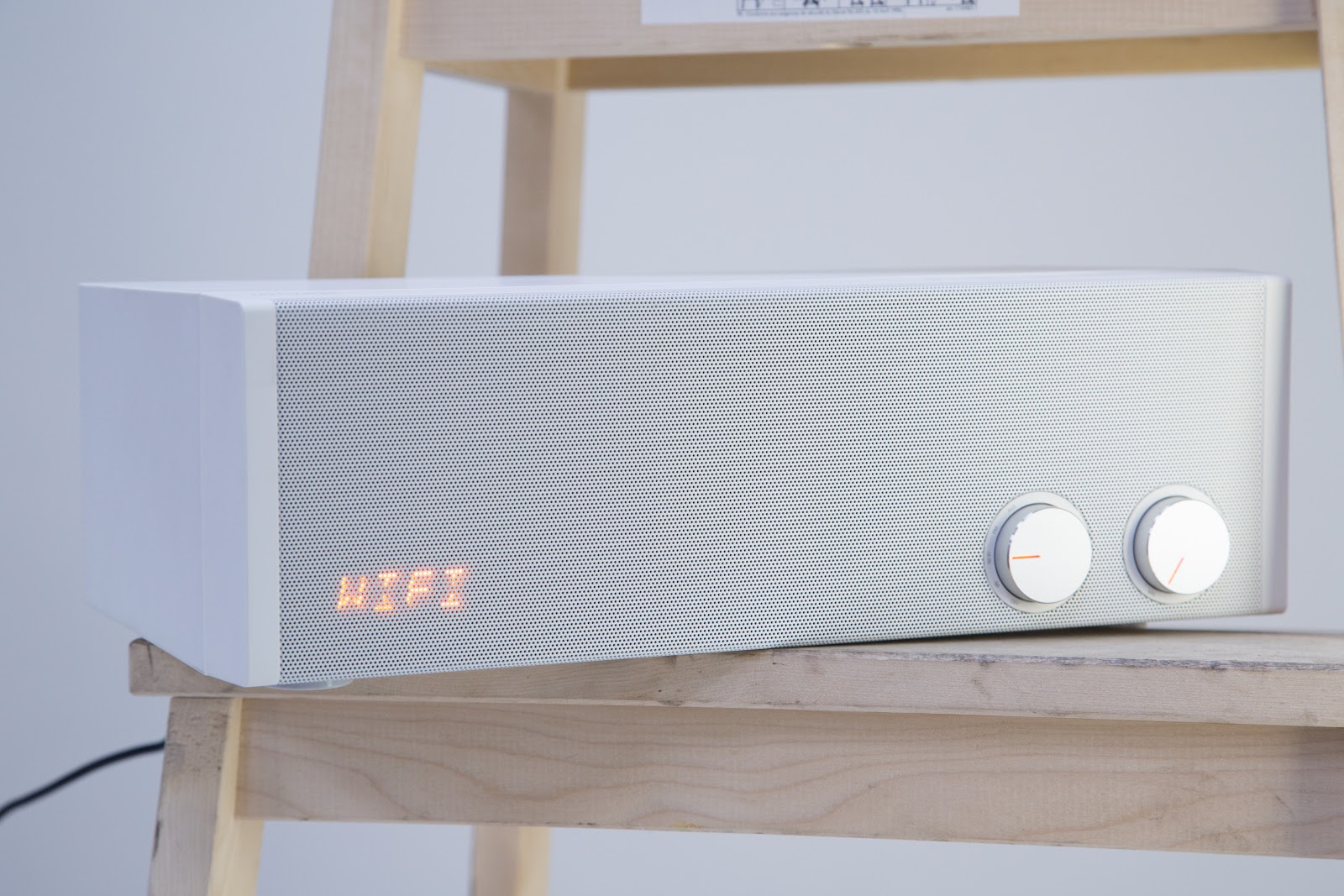
If you plunge into history for a moment, iRiver customers found recognition with the iMP-100 CD-MP3 player. The same iPod still existed in the form of plans and design drawings, and the “king” of the audio player market continued to release new models. Only iRiver managed to make the students happy to buy a money player with a built-in memory of 256 MB, powered by a single AA battery, for many space players for those days.
Soon, however, iRiver could not stand the competition from young producers, but if in most cases this means bankruptcy or a takeover of the company, then the phrase “everything that is done is for the better” was never appropriate, because for the manufacturer it was switch to the development of Hi-End equipment - already under the now familiar brand Astell & Kern. Our current hero, the LS150 column (Live Stream), cannot be called a premium for the price, as it fits into the budget up to 10 thousand rubles, which does not make it a weak competitor compared to models of other famous brands worth from 20 to 30 thousand rubles.
')
Yes, you need to be prepared for such money, that you will not get the sound of the level of large stationary audio systems, but after testing the LS150 in the field, we can safely say that it is one of the best devices of its kind in terms of price-quality ratio. Especially while the wireless sound in the speakers is far from its wired “brother”, and only some manufacturers gradually manage to achieve high-quality sound via Bluetooth, and such solutions cost a lot. With what iRiver really did not lose in the LS150, it’s with the design - here it’s beyond all praise (perhaps because the inscription “Powered by Astell & Kern” is on the back, these design guys know a lot about it).
The column reached Russia at the end of last year, and has already been studied far and wide by fans of portable audio. The time has come for us to see what iRiver holds the brand, and what details it could give more attention.
The box is decorated stylishly, beautifully and has a convenient handle for carrying. Inside, in addition to the neatly wrapped column, there is an instruction with the necessary documentation, and in a separate box - a 3.5 mm cable for listening to the LS150 "in wire mode", a power supply unit and ... an FM antenna. Yes, iRiver decided to give the column a bit of "vintage", but more on that later.
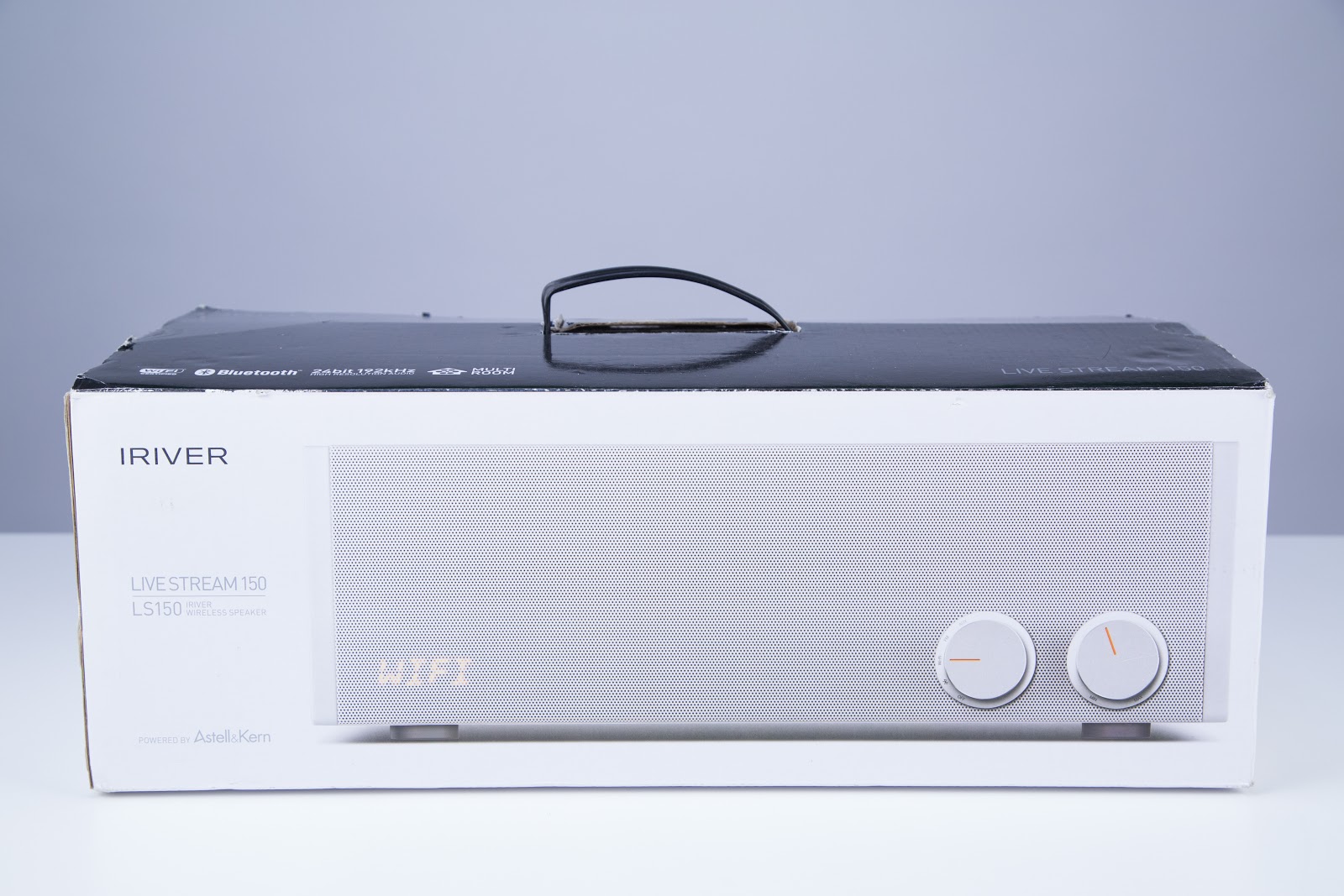
By the way, with the help of a small life hack you can find out in which year and month the column was produced. The numbers from 7 to 10 in the serial number of the device indicate the year and month of manufacture, respectively: for example, if it is 1701, then the column was produced in January 2017. It is not entirely clear in which cases this might be useful, so rather a purely scientific interest.

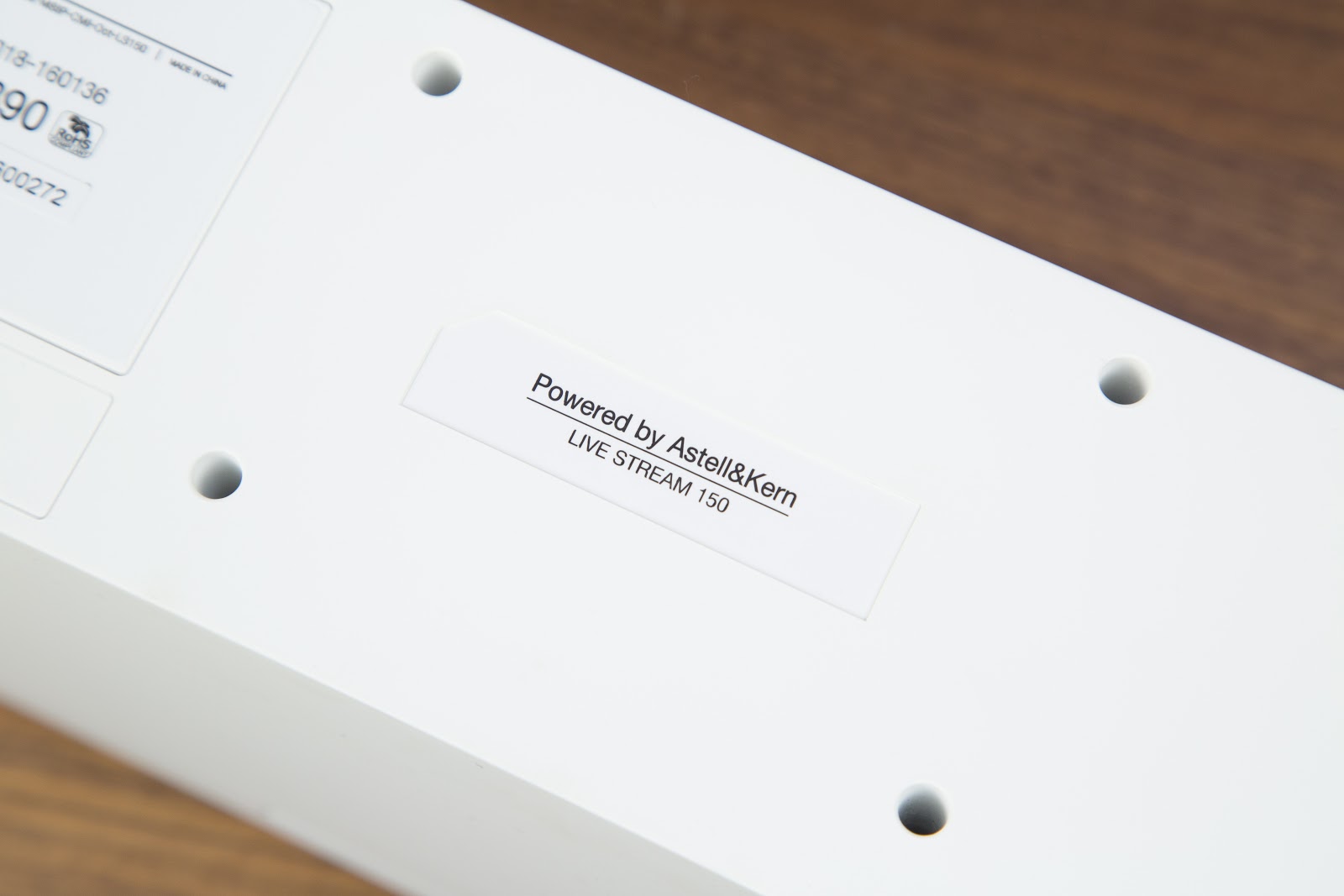
We are not going to listen to the radio yet, so for the time being we will put off all the accessories, including the power supply, and see how the iRiver designers have tried on the appearance of the device.
At the beginning of the review there was a small spoiler that the design of the LS150 is all right. The column is made in a strict rectangular shape and looks minimalistic, which allows it to look great in both Scandinavian and more classical interiors. To be honest, the column from afar looks like a radio receiver from the 80s, and this is its trick. In many ways, the similarity is achieved due to the presence of two rotary knobs placed on the front panel in the lower right corner. One of them is responsible for switching between playback modes (Wi-Fi, Bluetooth, FM, wired), and the other is used to adjust the volume.
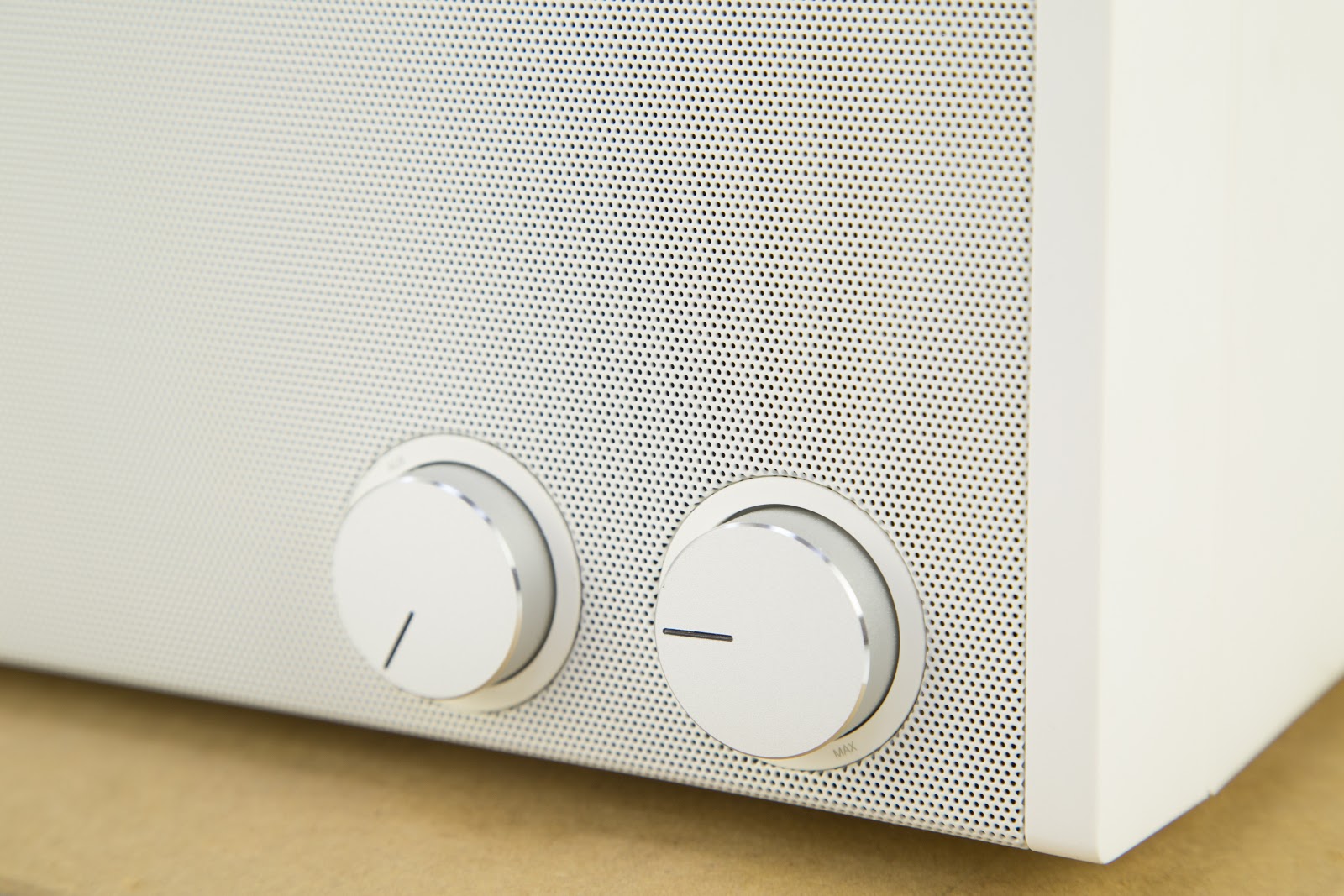

When the column is turned on, the handles on the handles glow with a pleasant orange light. The move is smooth, despite the fact that the buttons feel massive.
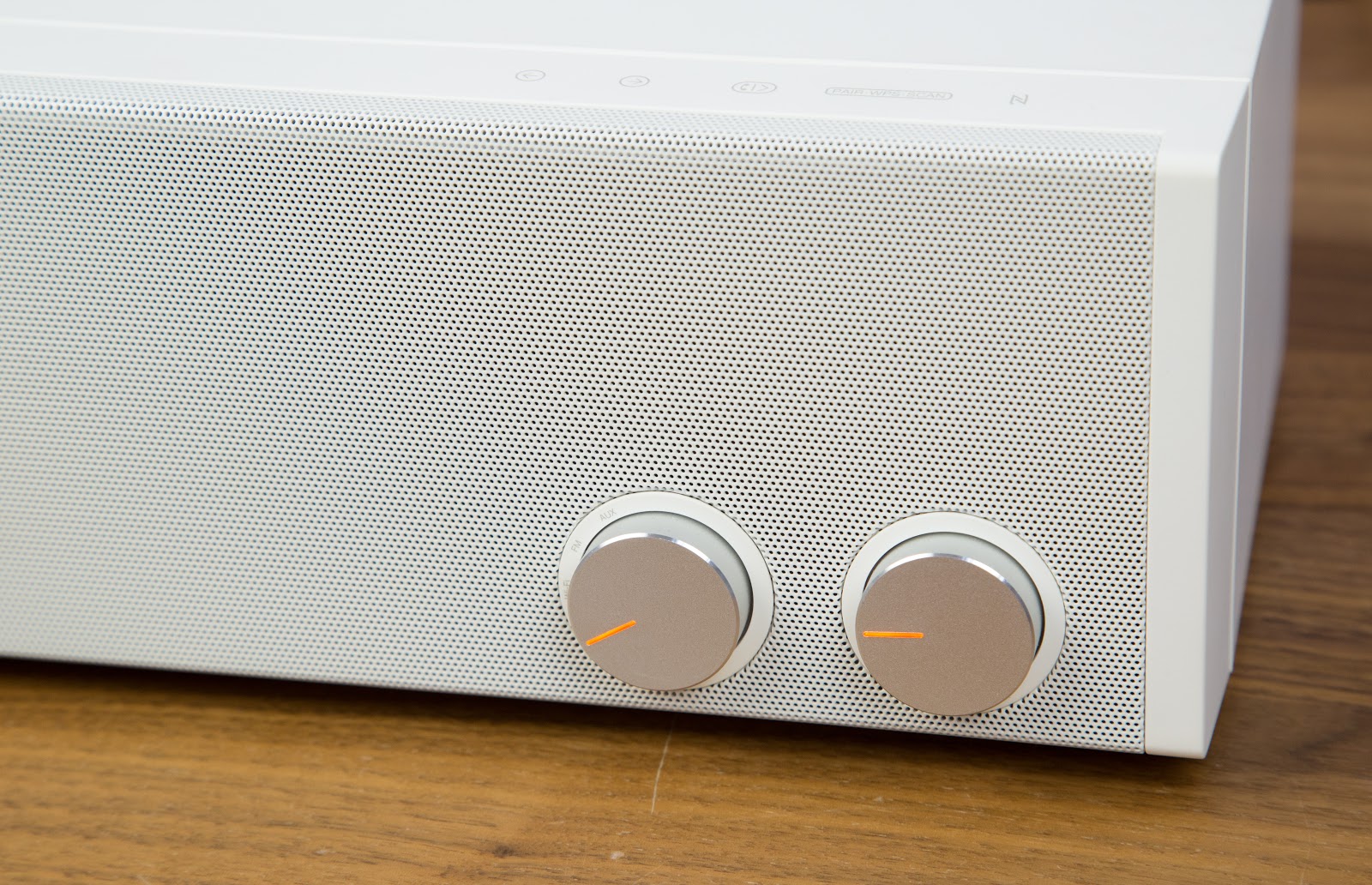
The volume has a scale of 30 points, and this is enough for everyone to find a comfortable level for themselves. Most listeners will probably stop between 10 and 15 points, hardcore lovers, of course, will immediately unscrew to the maximum and will be pleasantly surprised that even at such a volume the speaker does not emit an unpleasant crackle and has a minimum of sound artifacts (if connected via Bluetooth, with AUX there is no such thing at all). For smartphone owners, you can use the speaker as a headset (built-in microphone is available), and if the device still has NFC, you can quickly pair with the LS150 .
A small display is hidden on the left side of the column, which again shows orange symbols. For example, it will inform you about the selected menu function (BT, Wi-Fi, etc.) or the frequency of the radio station. At the same time, the screen does not light up permanently, but goes out 15 seconds after the display of the selected values, therefore, it rather performs an informational function.
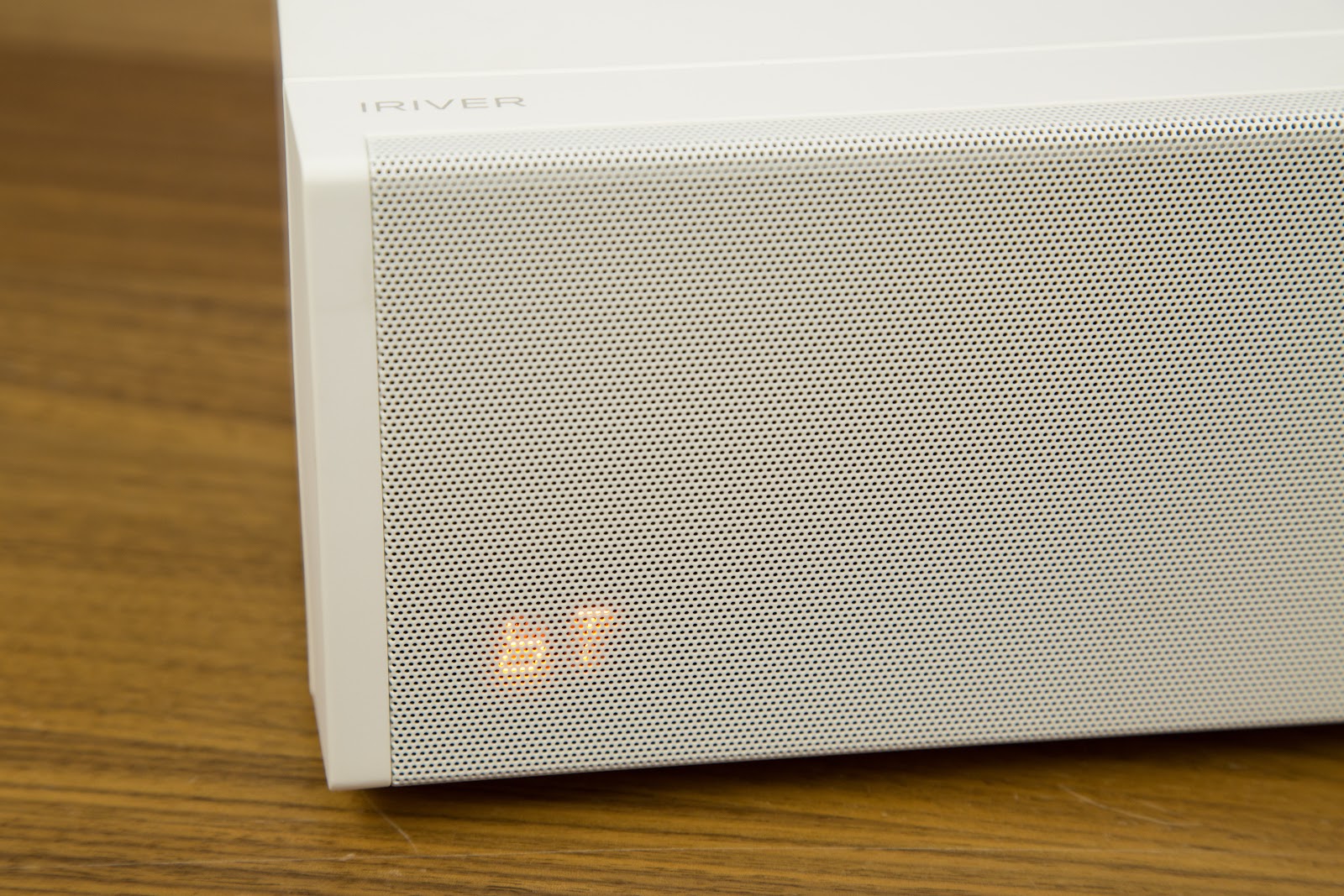
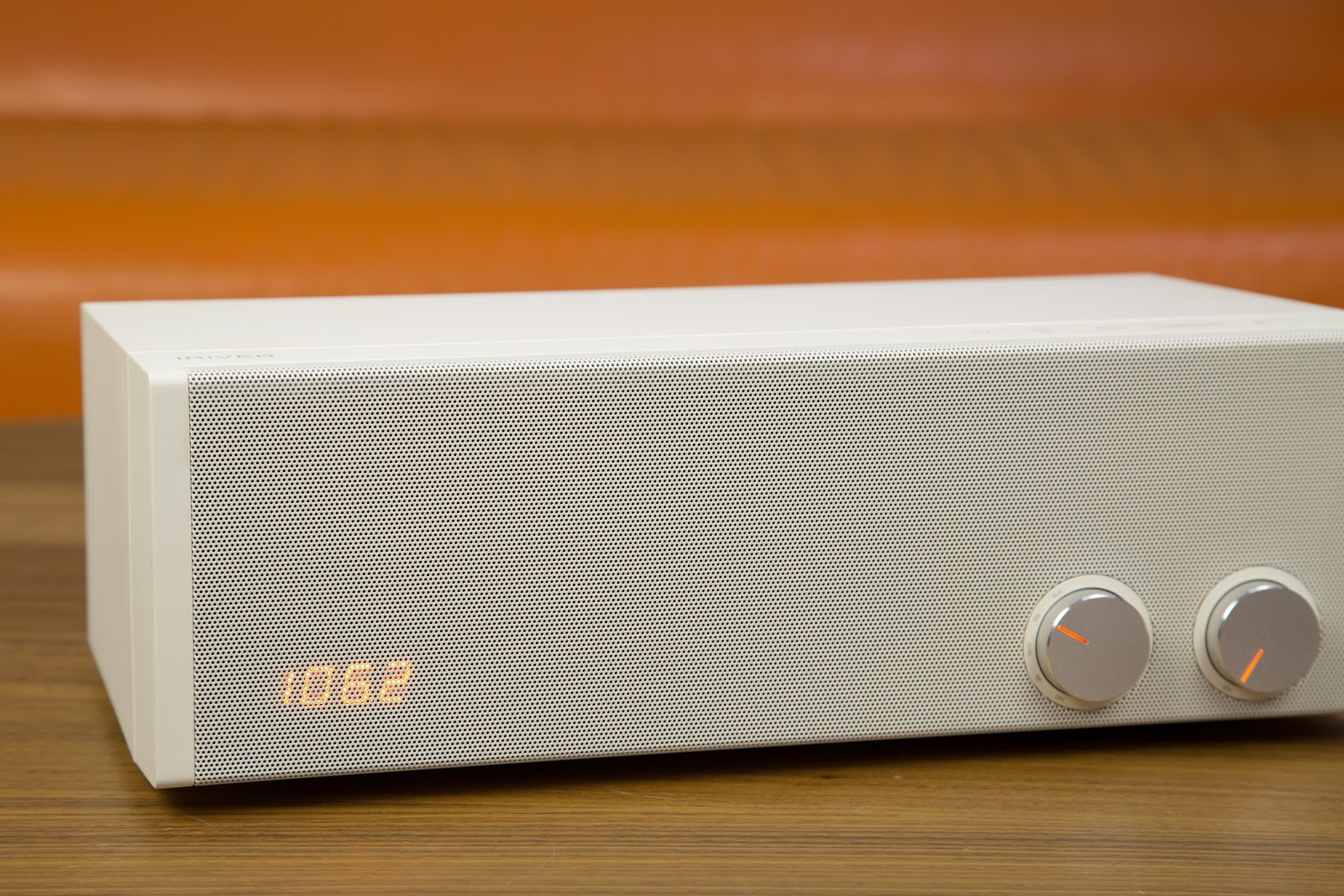
On the top panel of the device, the manufacturer has placed all control buttons for switching between menu items, answering a call, wireless connection settings, including via NFC. The buttons are touch-sensitive, but they work with enviable accuracy, although it will take a couple of days to get used to it. The case itself is made of plastic with a matte soft-touch surface - this not only makes the column pleasant to the touch, but also minimizes the possibility of fingerprints. Four rubber feet do not allow the device to slide on the surface, so you can even put the column on a smooth lacquer table.
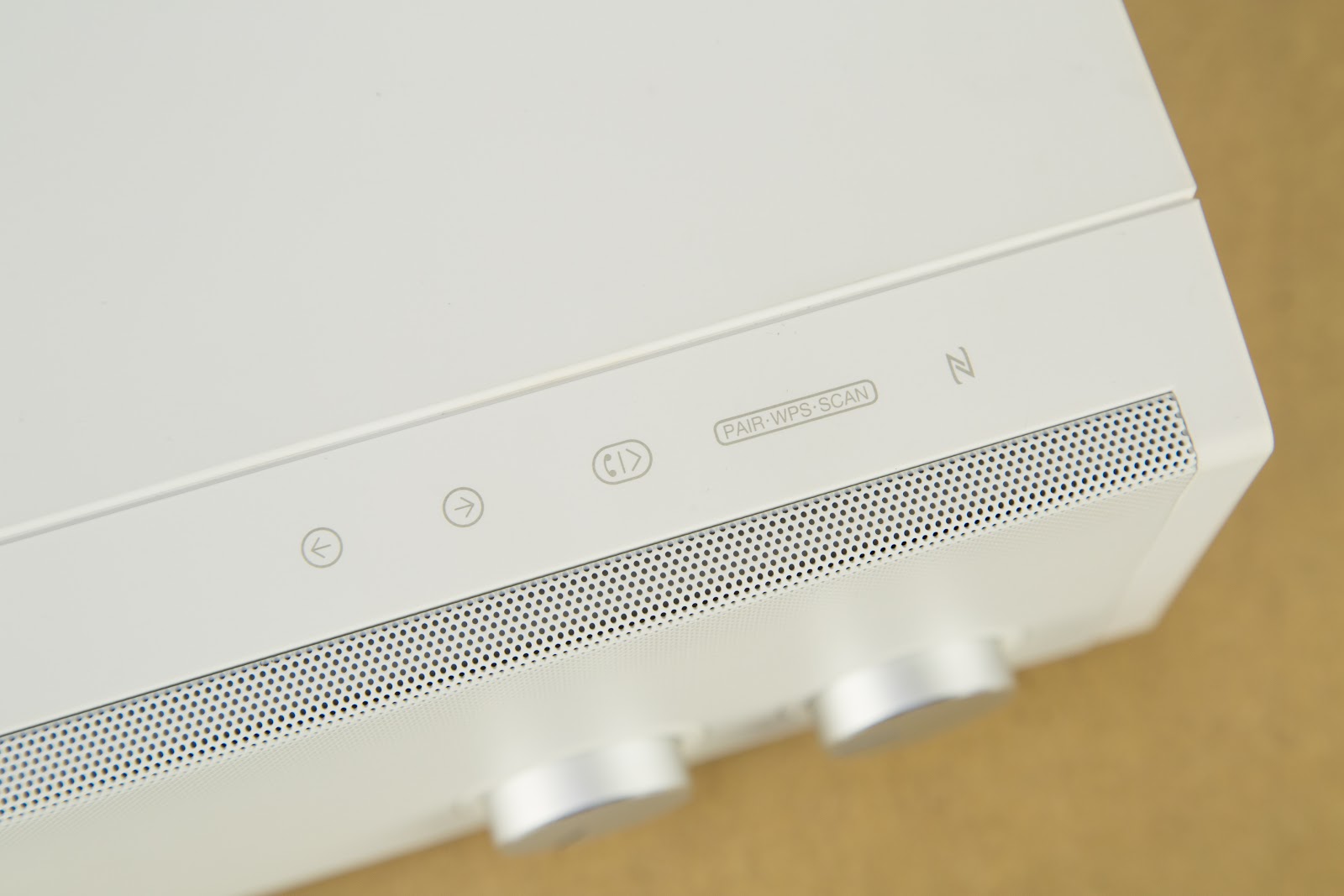
Behind you can find the AUX line input for connecting a sound source via cable (also used to connect an FM antenna), a power connector and one USB port, which, contrary to general opinion, is used not to play music from a USB flash drive, but to charge mobile devices the same iPhone or smartphone on Android. An unusual decision, but at the same time useful.
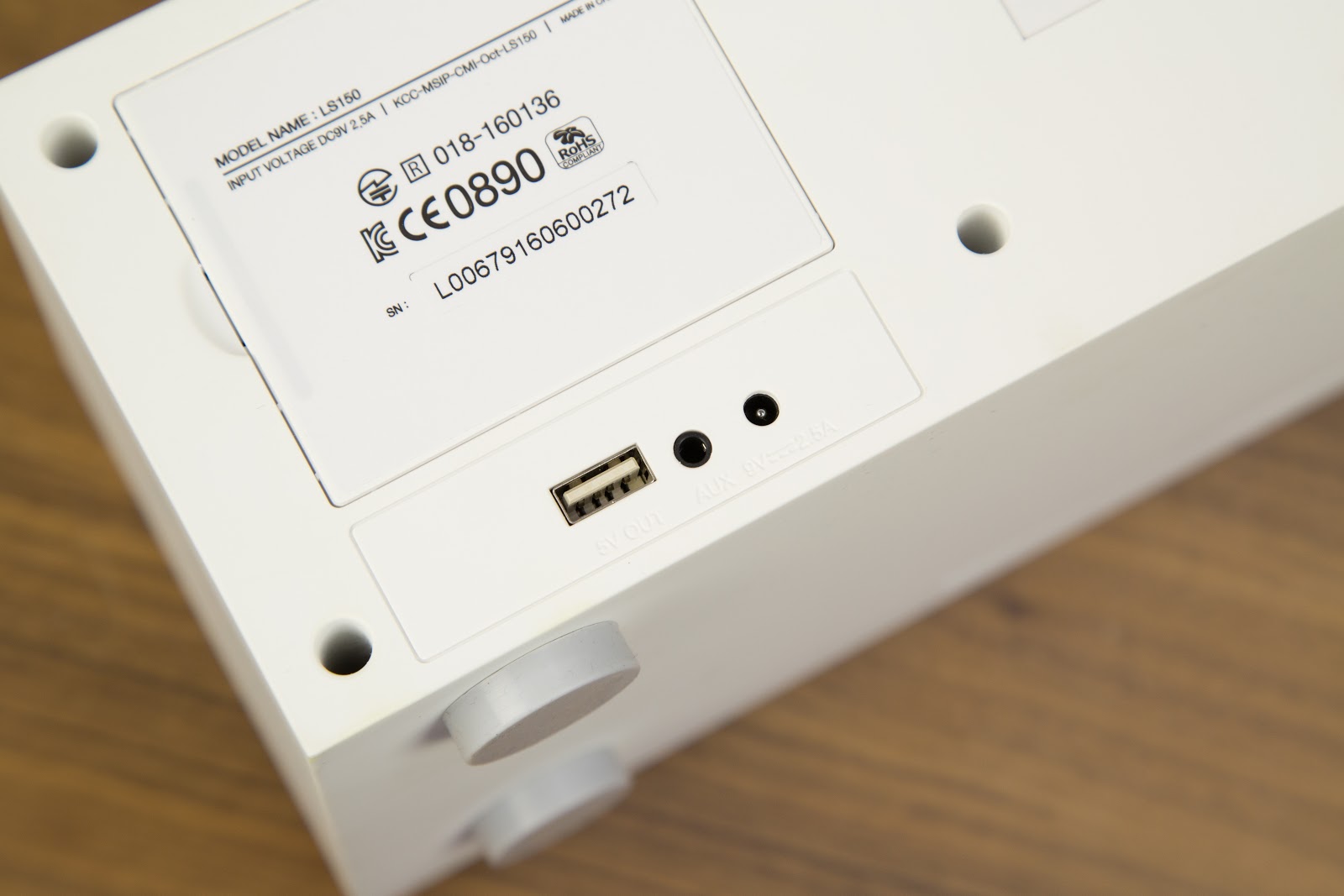
The three-way speaker system is equipped with 5 speakers - 2 high-frequency, 2 mid-frequency, one subwoofer and one passive radiator. A clear emphasis in the LS150 is placed on the bass: specifically in order to enhance the low frequencies, iRiver used the Ultra Bass Boost technology - even at low volume levels, the bass “knock” as it should.
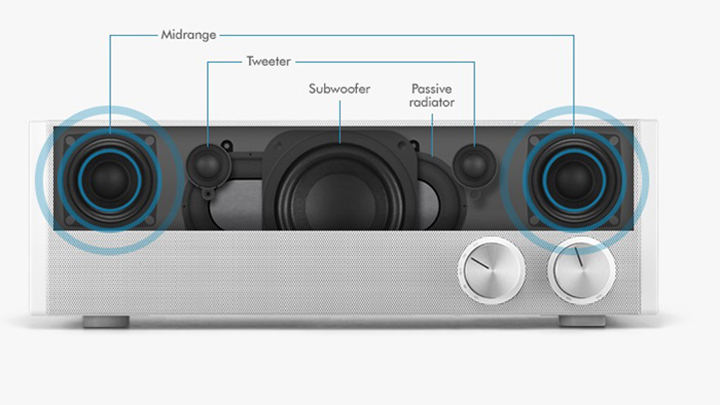
An important advantage is the support of 24bit / 192 kHz to satisfy the most demanding audiophiles. Not without work with the NAS, you can also comfortably listen to music from your computer over the DLNA network. But most importantly, of course - support for Bluetooth, Wi-Fi and AirPlay. It is very convenient, for example, to connect the LS150 to a TV using AUX, and if necessary, use AirPlay (you need an iPhone, iPad or other device from Apple) or Bluetooth to transmit sound if you need to “make friends” with Android devices. Perhaps this is one of the main advantages of the device - several connection options to choose from, whereas many manufacturers offer only Bluetooth for audio.
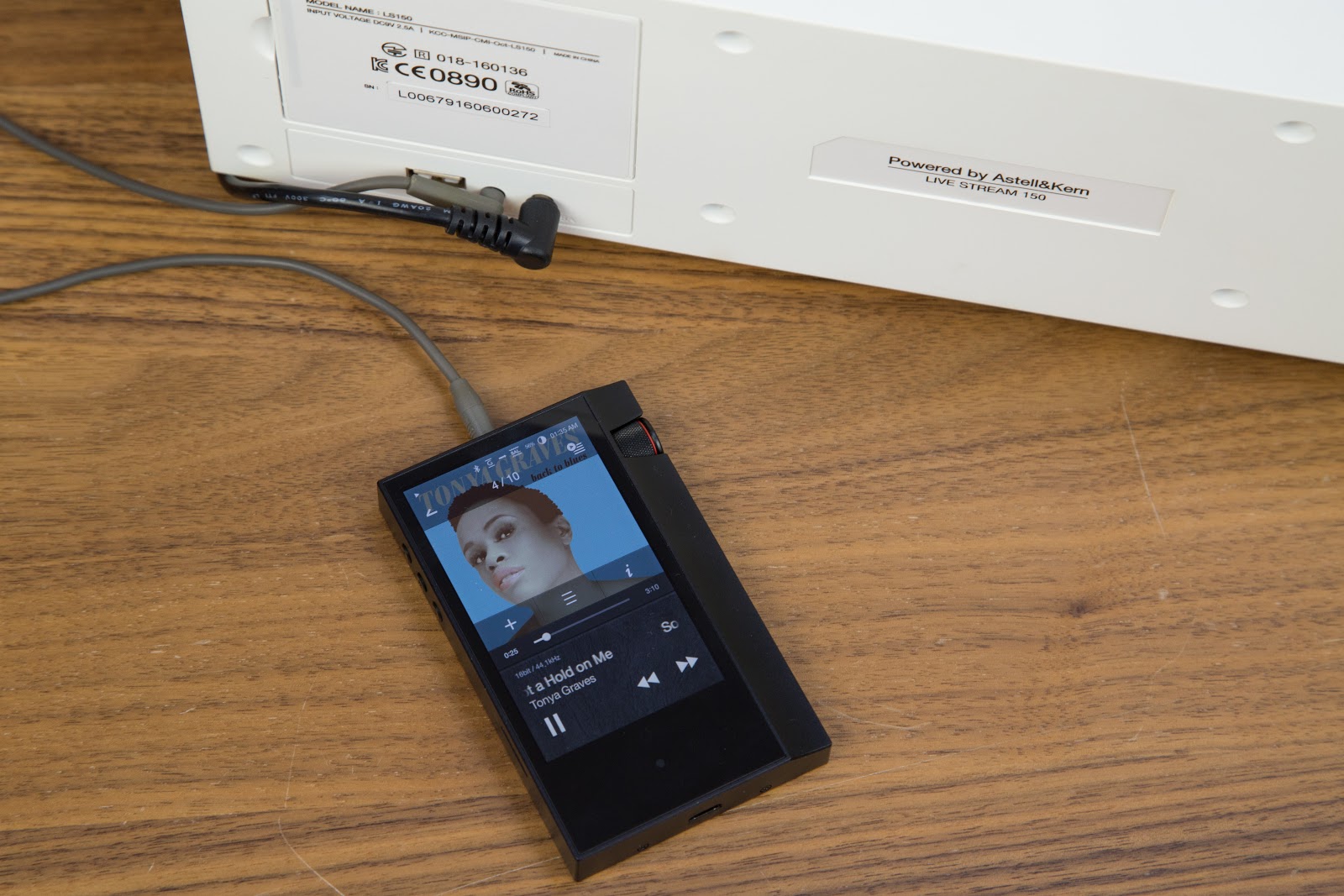
Among the supported formats claimed the most common, including Hi-Res - MP3, WMA, WAV, ALAC, AAC, APE, OGG and FLAC. The range of supported frequencies is from 50 to 20 000 Hz, and the sampling frequency is 8 kHz ~ 192 kHz (8/16/24 bits per sample). If possible, audio transmission via Bluetooth is best avoided: the standard is a bit outdated (2.1), therefore, the reception distance is less than 10 meters.
Modern "frills" too short. The column is conveniently controlled using the iRiver Live Stream application — it can be used to connect multiple LS150s via a wireless network (yes, it has not been without a multiroom), for example, to set up simultaneous playback of the track or transmit the left and right channels separately to two LS150s and receive stereo sound.
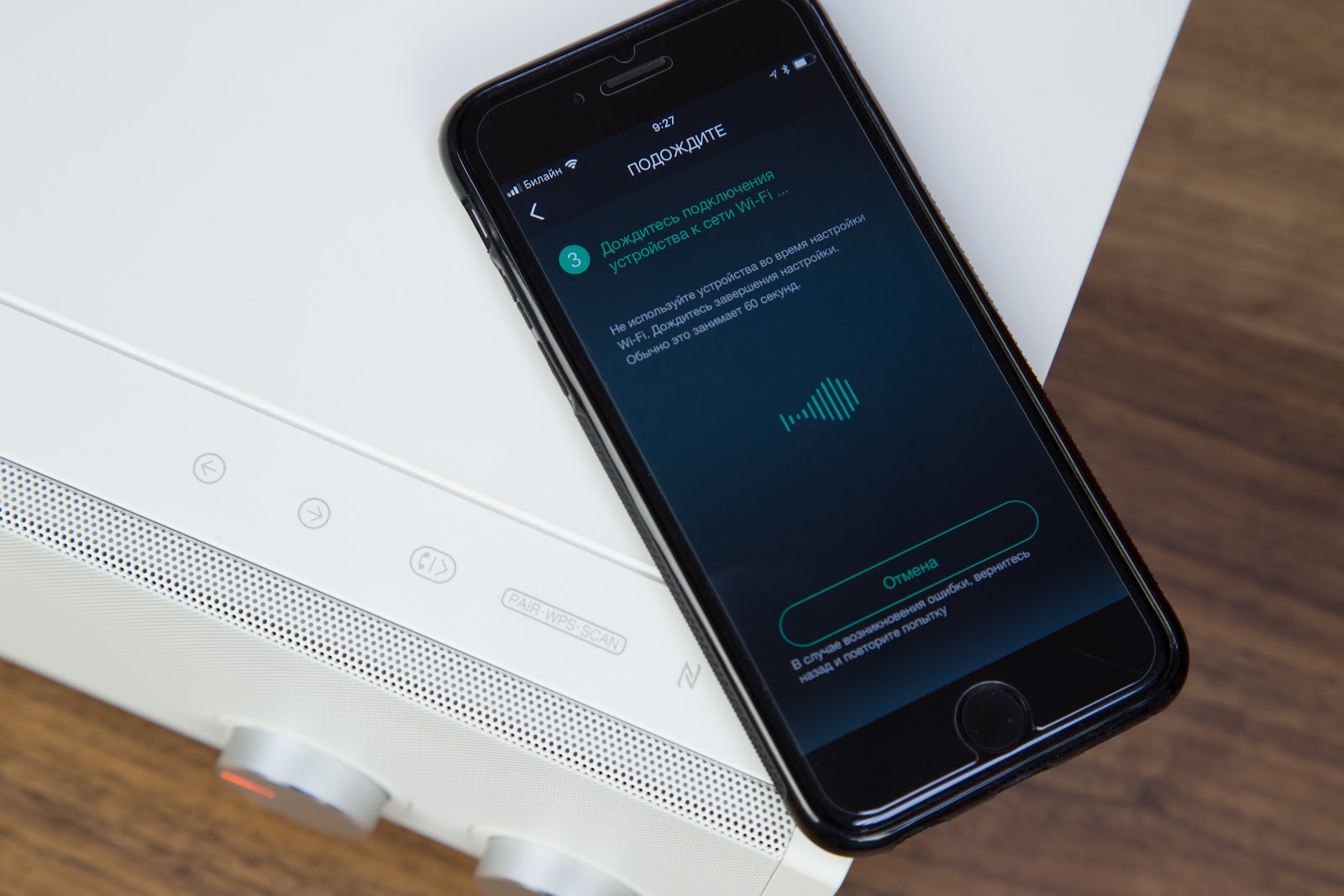
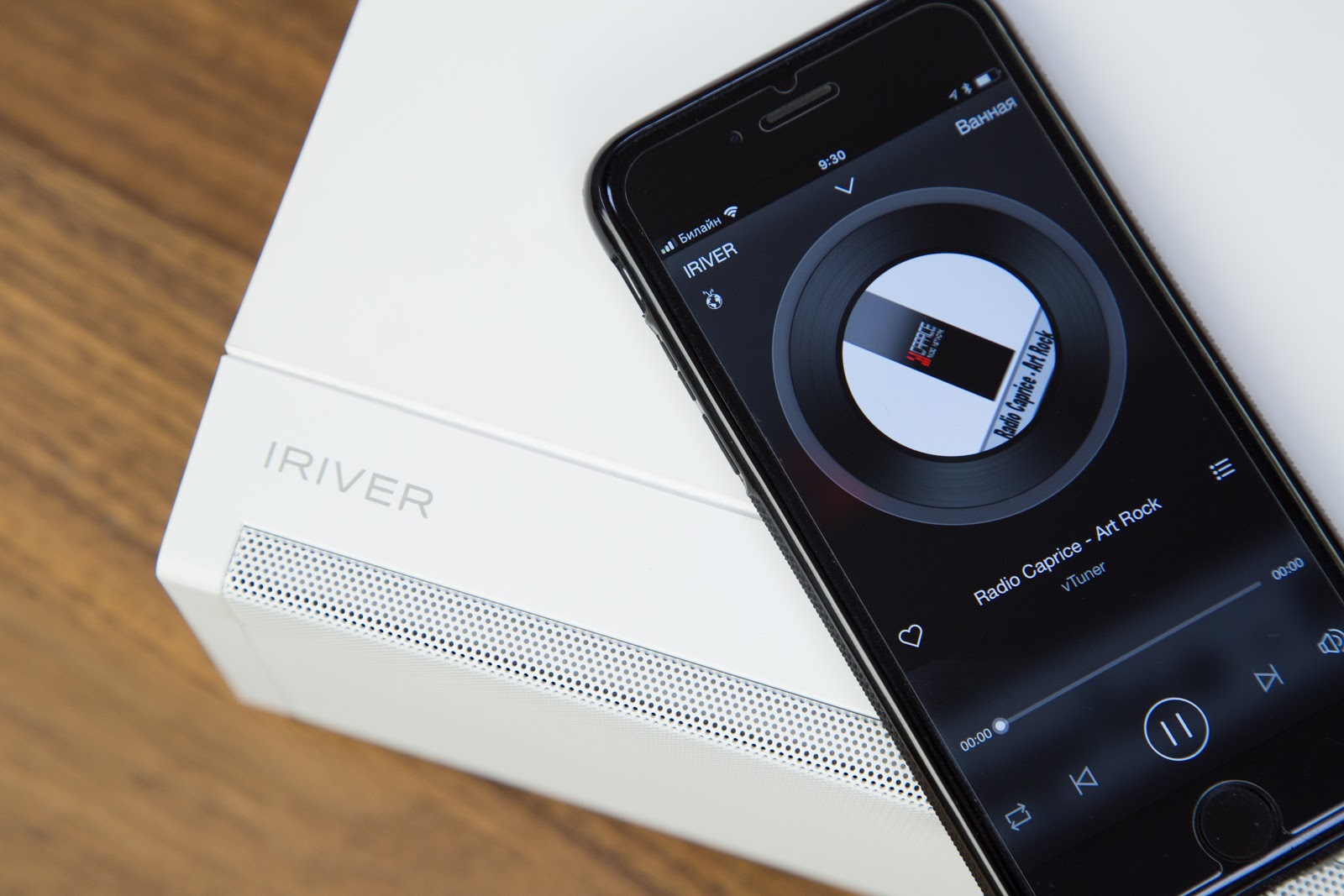
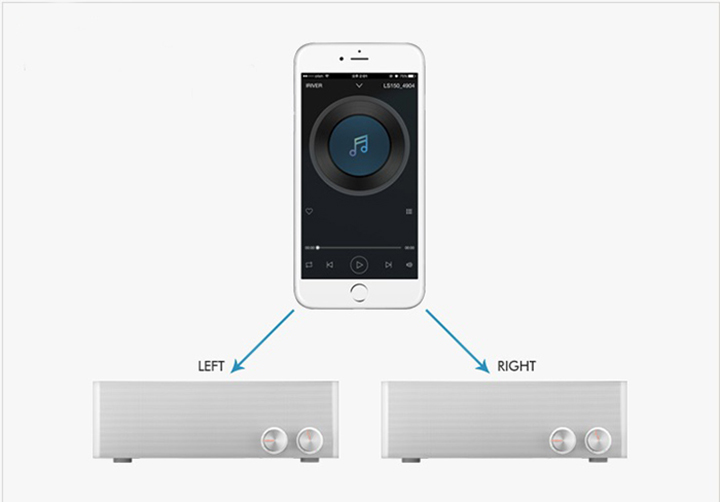
The presence of FM radio in a similar device in 2017 is a surprise, because in the era of streaming services and Hi-Res audio, most people listen to radio stations except in the car. At the same time, some transfer their habits home or to work, and for them, it seems, they put in the kit a special flexible antenna that connects to the AUX port. It can be placed behind the speaker so that the wires will not be visible, and enjoy your favorite radio stations. The reception in the apartment is very good. The device supports automatic and manual search for stations in the FM range between 88.0 and 108.0 MHz. Without an antenna, by the way, you can also listen to the radio, just need to place the device closer to the windows.
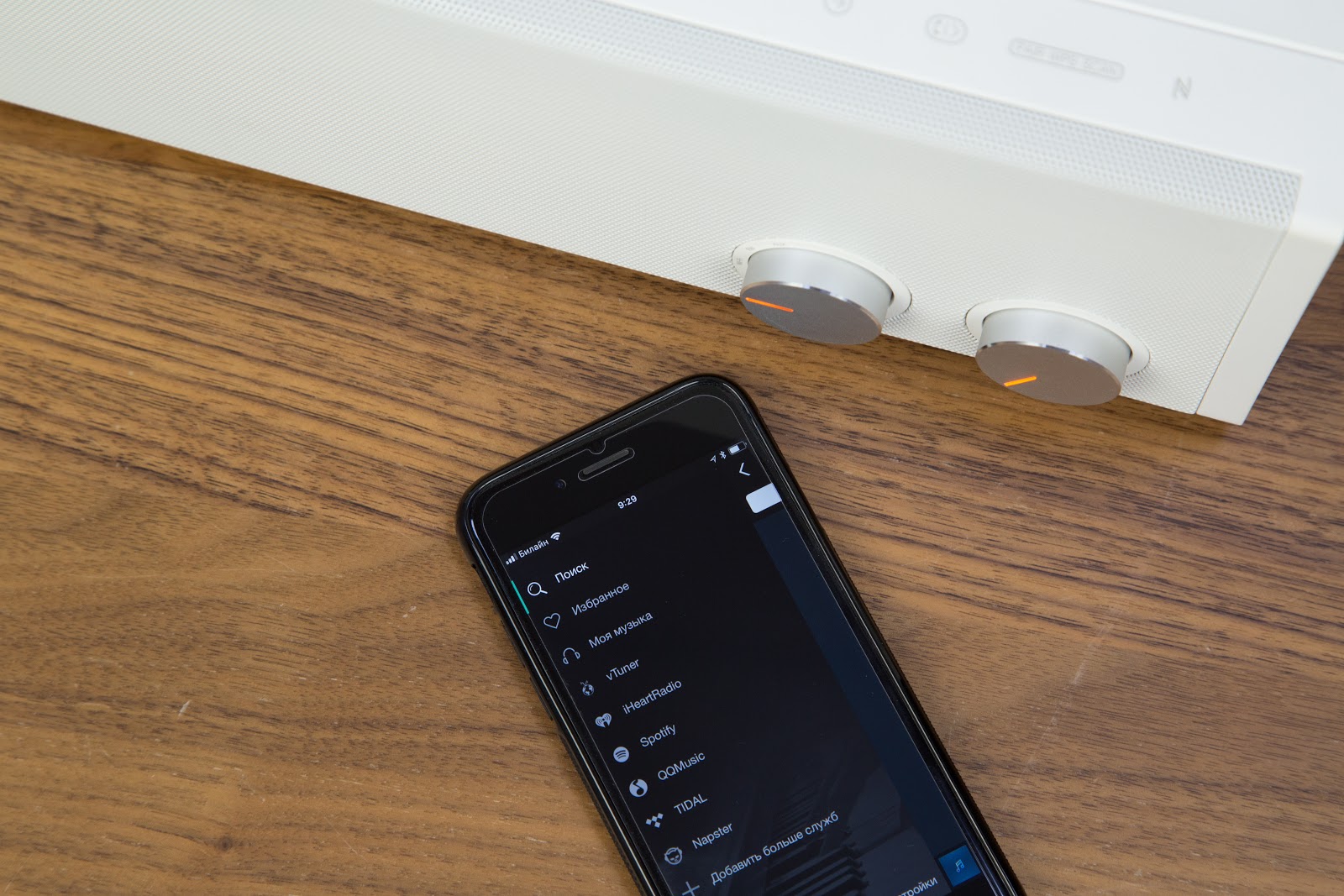
As for the quality of playback, then via Bluetooth it is, of course, much lower than with AUX, so it’s better to choose AirPlay for wireless sound transmission. In general, the tracks of various genres come up with a bang, but the column is best revealed with hip-hop and other compositions saturated with bass. The volume of the LS150 was enough to accommodate 30-35 square meters - if you want to cover an even larger area, you will need to set up a multi-room with several speakers. But alone it sounds decent: nevertheless, the Ultra Bass Boost technology and five speakers with a passive radiator give theirs.

Feels like it becomes clear that the engineers at Astell & Kern still had their hand on the sound quality of the speaker. Yes, this is not a stationary acoustics, and loses to some similar models from famous brands, but the LS150 costs 2-3 times less. Here we return to the issue of price / quality - there are no questions to the device according to this criterion.
Of course, you cannot call this column completely portable - it is necessary that it be permanently connected to the network, and for some this may be a drawback, since you will not take it with you on a hike or its nature. However, to move from one room to another or to the kitchen - easily, incomplete 3 kg allow even a fragile girl to do it.
Even if you don’t know the cost of the iRiver LS150 , you can make it attractive for yourself to purchase, since the speaker has an interesting stylish design and gives a rich sound with powerful bass. If you want, you can find flaws (and we did it), but for your money the column clearly deserves attention, especially since it meets most of the criteria: the look is original, the sound is clear and without wires. Well, almost without.

If you plunge into history for a moment, iRiver customers found recognition with the iMP-100 CD-MP3 player. The same iPod still existed in the form of plans and design drawings, and the “king” of the audio player market continued to release new models. Only iRiver managed to make the students happy to buy a money player with a built-in memory of 256 MB, powered by a single AA battery, for many space players for those days.
Soon, however, iRiver could not stand the competition from young producers, but if in most cases this means bankruptcy or a takeover of the company, then the phrase “everything that is done is for the better” was never appropriate, because for the manufacturer it was switch to the development of Hi-End equipment - already under the now familiar brand Astell & Kern. Our current hero, the LS150 column (Live Stream), cannot be called a premium for the price, as it fits into the budget up to 10 thousand rubles, which does not make it a weak competitor compared to models of other famous brands worth from 20 to 30 thousand rubles.
')
Yes, you need to be prepared for such money, that you will not get the sound of the level of large stationary audio systems, but after testing the LS150 in the field, we can safely say that it is one of the best devices of its kind in terms of price-quality ratio. Especially while the wireless sound in the speakers is far from its wired “brother”, and only some manufacturers gradually manage to achieve high-quality sound via Bluetooth, and such solutions cost a lot. With what iRiver really did not lose in the LS150, it’s with the design - here it’s beyond all praise (perhaps because the inscription “Powered by Astell & Kern” is on the back, these design guys know a lot about it).
The column reached Russia at the end of last year, and has already been studied far and wide by fans of portable audio. The time has come for us to see what iRiver holds the brand, and what details it could give more attention.
Specifications
| Frequency range | 50 - 20.000 Hz |
| Frequency Range (FM) | 88.0 ~ 108.0 MHz |
| Speakers | 5 W x 2 (mid-frequency), 10 W x 1 (subwoofer) (1 "tweeter x 2/2" mid-frequency x 2 / 3.5 "subwoofer / passive radiator) |
| Sampling frequency | 8 kHz ~ 192 kHz (8/16/24 bits per sample) |
| Supported Formats | MP3, WMA, WAV, ALAC, AAC, APE, OGG, FLAC |
| Bluetooth | V2.1 + EDR |
| the Internet | Wi-Fi (802.11b / g / n), DLNA (UPnP), Airplay |
| Dimensions | 350 x 117 x 179 mm |
| Weight | 2.98 kg |
Equipment
The box is decorated stylishly, beautifully and has a convenient handle for carrying. Inside, in addition to the neatly wrapped column, there is an instruction with the necessary documentation, and in a separate box - a 3.5 mm cable for listening to the LS150 "in wire mode", a power supply unit and ... an FM antenna. Yes, iRiver decided to give the column a bit of "vintage", but more on that later.

By the way, with the help of a small life hack you can find out in which year and month the column was produced. The numbers from 7 to 10 in the serial number of the device indicate the year and month of manufacture, respectively: for example, if it is 1701, then the column was produced in January 2017. It is not entirely clear in which cases this might be useful, so rather a purely scientific interest.


We are not going to listen to the radio yet, so for the time being we will put off all the accessories, including the power supply, and see how the iRiver designers have tried on the appearance of the device.
Design
At the beginning of the review there was a small spoiler that the design of the LS150 is all right. The column is made in a strict rectangular shape and looks minimalistic, which allows it to look great in both Scandinavian and more classical interiors. To be honest, the column from afar looks like a radio receiver from the 80s, and this is its trick. In many ways, the similarity is achieved due to the presence of two rotary knobs placed on the front panel in the lower right corner. One of them is responsible for switching between playback modes (Wi-Fi, Bluetooth, FM, wired), and the other is used to adjust the volume.


When the column is turned on, the handles on the handles glow with a pleasant orange light. The move is smooth, despite the fact that the buttons feel massive.

The volume has a scale of 30 points, and this is enough for everyone to find a comfortable level for themselves. Most listeners will probably stop between 10 and 15 points, hardcore lovers, of course, will immediately unscrew to the maximum and will be pleasantly surprised that even at such a volume the speaker does not emit an unpleasant crackle and has a minimum of sound artifacts (if connected via Bluetooth, with AUX there is no such thing at all). For smartphone owners, you can use the speaker as a headset (built-in microphone is available), and if the device still has NFC, you can quickly pair with the LS150 .
A small display is hidden on the left side of the column, which again shows orange symbols. For example, it will inform you about the selected menu function (BT, Wi-Fi, etc.) or the frequency of the radio station. At the same time, the screen does not light up permanently, but goes out 15 seconds after the display of the selected values, therefore, it rather performs an informational function.


On the top panel of the device, the manufacturer has placed all control buttons for switching between menu items, answering a call, wireless connection settings, including via NFC. The buttons are touch-sensitive, but they work with enviable accuracy, although it will take a couple of days to get used to it. The case itself is made of plastic with a matte soft-touch surface - this not only makes the column pleasant to the touch, but also minimizes the possibility of fingerprints. Four rubber feet do not allow the device to slide on the surface, so you can even put the column on a smooth lacquer table.

Behind you can find the AUX line input for connecting a sound source via cable (also used to connect an FM antenna), a power connector and one USB port, which, contrary to general opinion, is used not to play music from a USB flash drive, but to charge mobile devices the same iPhone or smartphone on Android. An unusual decision, but at the same time useful.

Technology and sound
The three-way speaker system is equipped with 5 speakers - 2 high-frequency, 2 mid-frequency, one subwoofer and one passive radiator. A clear emphasis in the LS150 is placed on the bass: specifically in order to enhance the low frequencies, iRiver used the Ultra Bass Boost technology - even at low volume levels, the bass “knock” as it should.

An important advantage is the support of 24bit / 192 kHz to satisfy the most demanding audiophiles. Not without work with the NAS, you can also comfortably listen to music from your computer over the DLNA network. But most importantly, of course - support for Bluetooth, Wi-Fi and AirPlay. It is very convenient, for example, to connect the LS150 to a TV using AUX, and if necessary, use AirPlay (you need an iPhone, iPad or other device from Apple) or Bluetooth to transmit sound if you need to “make friends” with Android devices. Perhaps this is one of the main advantages of the device - several connection options to choose from, whereas many manufacturers offer only Bluetooth for audio.

Among the supported formats claimed the most common, including Hi-Res - MP3, WMA, WAV, ALAC, AAC, APE, OGG and FLAC. The range of supported frequencies is from 50 to 20 000 Hz, and the sampling frequency is 8 kHz ~ 192 kHz (8/16/24 bits per sample). If possible, audio transmission via Bluetooth is best avoided: the standard is a bit outdated (2.1), therefore, the reception distance is less than 10 meters.
Modern "frills" too short. The column is conveniently controlled using the iRiver Live Stream application — it can be used to connect multiple LS150s via a wireless network (yes, it has not been without a multiroom), for example, to set up simultaneous playback of the track or transmit the left and right channels separately to two LS150s and receive stereo sound.



The presence of FM radio in a similar device in 2017 is a surprise, because in the era of streaming services and Hi-Res audio, most people listen to radio stations except in the car. At the same time, some transfer their habits home or to work, and for them, it seems, they put in the kit a special flexible antenna that connects to the AUX port. It can be placed behind the speaker so that the wires will not be visible, and enjoy your favorite radio stations. The reception in the apartment is very good. The device supports automatic and manual search for stations in the FM range between 88.0 and 108.0 MHz. Without an antenna, by the way, you can also listen to the radio, just need to place the device closer to the windows.

As for the quality of playback, then via Bluetooth it is, of course, much lower than with AUX, so it’s better to choose AirPlay for wireless sound transmission. In general, the tracks of various genres come up with a bang, but the column is best revealed with hip-hop and other compositions saturated with bass. The volume of the LS150 was enough to accommodate 30-35 square meters - if you want to cover an even larger area, you will need to set up a multi-room with several speakers. But alone it sounds decent: nevertheless, the Ultra Bass Boost technology and five speakers with a passive radiator give theirs.

Feels like it becomes clear that the engineers at Astell & Kern still had their hand on the sound quality of the speaker. Yes, this is not a stationary acoustics, and loses to some similar models from famous brands, but the LS150 costs 2-3 times less. Here we return to the issue of price / quality - there are no questions to the device according to this criterion.
Of course, you cannot call this column completely portable - it is necessary that it be permanently connected to the network, and for some this may be a drawback, since you will not take it with you on a hike or its nature. However, to move from one room to another or to the kitchen - easily, incomplete 3 kg allow even a fragile girl to do it.
Style, price and sound
Even if you don’t know the cost of the iRiver LS150 , you can make it attractive for yourself to purchase, since the speaker has an interesting stylish design and gives a rich sound with powerful bass. If you want, you can find flaws (and we did it), but for your money the column clearly deserves attention, especially since it meets most of the criteria: the look is original, the sound is clear and without wires. Well, almost without.
Source: https://habr.com/ru/post/374135/
All Articles